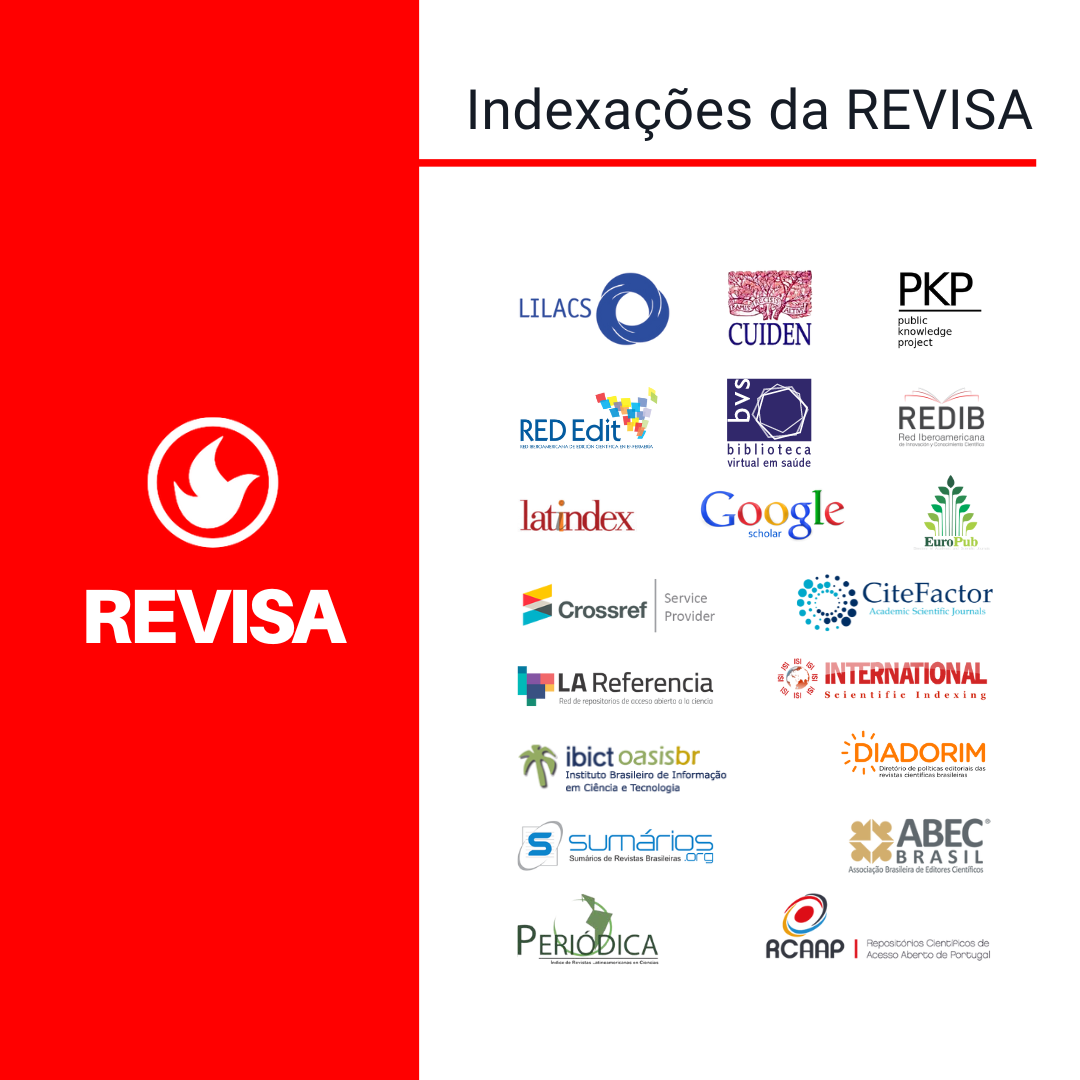Prenatal and perinatal risk factors of mothers who had preterm births
Keywords:
Risk factors, Maternal and child health, Neonatal prematurity, Preterm newborn, Family relationshipsAbstract
Objective: to characterize the prevalence of maternal, prenatal, and perinatal risk factors, as well as family support received during pregnancy, and investigate their association with premature births. Method: This cross- sectional, quantitative, and retrospective study was conducted at a university in the Federal District. Data was collected in 2021 and 2022 through a questionnaire administered to 22 mothers of preterm infants who met the following criteria: being mothers of babies born at 37 weeks or less and voluntarily agreeing to respond to the questionnaire. Results: The majority of the mothers were aged between 18 and 29 years (50%), were of brown ethnicity (54.54%), had no history of previous premature birth (72.80%), had a single pregnancy (81.81%), had 7 to 10 prenatal consultations (45.40%), did not undergo pelvic physiotherapy (86.36%), or participate in physical exercises during pregnancy (86.36%). According to the family Apgar scale, these mothers had highly functional families (81.81%). Conclusion: The analyzed data indicate that the evaluated mothers have functional families with adequate family support. However, certain maternal variables, such as ethnicity, type of pregnancy, age, and practice of physical exercises, may influence the risk of preterm birth.
References
Brandi LD, Rocha LR, Silva LS, Bretas LG, Rodrigues MA, Araújo ST. Fatores de risco materno-fetais para o nascimento pré-termo em hospital de referência de Minas Gerais. Rev Medica Minas Gerais [Internet]. 2020 [citado 8 mar 2023];30. Disponível em: https://doi.org/10.5935/2238-3182.v30supl.4.06
Jesus RL, Santos GM, Barreto MT, Monteiro MJ, Silva RV, Silva HJ. Caracterização dos recém-nascidos pré-termo nascidos no estado do Piauí entre 2011 a 2015. ARCH HEALTH INVESTIG [Internet]. 2019 Jul 8 [citado 11 mar 2023];8(4). Disponível em: https://doi.org/10.21270/archi.v8i4.3193
Brasil, Ministério da Saúde. Banco de dados do Sistema Único de Saúde- DATASUS. [Internet]. Brasília: Ministério da Saúde; [acessado em 9 out 2022]. Disponível em: http://www.datasus.gov.br
Brasil, Ministério da Saúde. Banco de dados do Sistema Único de Saúde- DATASUS. [Internet]. Brasília: Ministério da Saúde; [acessado em 9 out 2022]. Disponível em: http://www.datasus.gov.br
Guimarães EA, Vieira CS, Nunes FD, Januário GD, Oliveira VC, Tibúrcio JD. Prevalência e fatores associados à prematuridade em Divinópolis, Minas Gerais, 2008-2011: análise do Sistema de Informações sobre Nascidos Vivos. Epidemiologia Serv Saude. 2017 Jan [citado 30 ago 2022];26(1):91-8. Disponível em: https://doi.org/10.5123/s1679-49742017000100010
Ramos HÂ, Cuman RK. Fatores de risco para prematuridade: pesquisa documental. Esc Anna Nery. Jun 2009 [citado 11 ago 2022];13(2):297-304. Disponível em: https://doi.org/10.1590/s1414-81452009000200009
Smilkstein G, Ashworth C, Montano D. Validity and reliability of the Family APGAR as a test of family function. The Journal of Family Practice. 1982;15(2):303-311.
Li Y, Fu X, Guo X, Liang H, Cao D, Shi J. Maternal preterm birth prediction in the United States: a case-control database study. BMC Pediatrics. 2022 Sep 14 [cited 2022 Sep 15];22(1). Available from: https://doi.org/10.1186/s12887- 022-03591-w
Rocha A dos S, Falcão IR, Teixeira CSS, Alves FJO, Ferreira AJF, Silva N de J, et al.. Determinantes do nascimento prematuro: proposta de um modelo teórico hierarquizado. Ciênc Saúde Coletiva. 2022 Aug;27(Ciênc. saúde coletiva, 2022 27(8)):3139–52.Doi: https://doi.org/10.1590/1413- 81232022278.03232022
Ministério da Saúde. Portaria n°569. 2000 [cited 2022 Nov 1]. Available from: https://bvsms.saude.gov.br/bvs/saudelegis/gm/2000/prt0570_01_06_2000_pep.html#:~:text=2
Fernandes KG, Souza RT, Passini R, Tedesco RP, Cecatti JG. Perinatal Outcomes and Factors Associated with Ethnic Group in cases of Preterm Birth: the Multicenter Study on Preterm Birth in Brazil. Rev Bras Ginecol Obstet RBGO Gynecol Obstet. Nov 2021 [cited 31 Aug 2022];43(11):811-9. Available from: https://doi.org/10.1055/s-0041-1739492
Cai M, Zhang B, Yang R, Zheng T, Dong G, Lin H, et al. Association between maternal outdoor physical exercise and the risk of preterm birth: a case-control study in Wuhan, China. BMC Pregnancy Childbirt. 12 Mar 2021 [cited 30 Aug 2022];21(1). Available from: https://doi.org/10.1186/s12884-021-03678-9
Aran T, Pekgöz I, Bozkaya H, Osmanagaoglu MA. Association between preterm labour and pelvic floor muscle function. J Obstet Gynaecol. 2018;38(8):1060-4. Doi: https://doi.org/10.1080/01443615.2018.1446922
Ahumada-Barrios ME, Alvarado GF. Risk Factors for premature birth in a hospital. Rev Lat Am Enferm [Internet]. 2016 [cited 31 Aug 2022];24. Available from: https://doi.org/10.1590/1518-8345.0775.2750.
Rosário LA, Boaventura T, Lechmann E, Freitas AI, Gonçalves M, Silva Junior MF. Aplicabilidade Apgar Familiar: Série de Casos. Pensar Acad [Internet]. 2020 Dec 16 [cited 28 Aug 2022];19(1):154. Available from: https://doi.org/10.21576/pa.2021v19i1.1926
Downloads
Published
How to Cite
Issue
Section
License
Copyright (c) 2024 Revista de Divulgação Científica Sena Aires

This work is licensed under a Creative Commons Attribution 4.0 International License.
-
Atribuição — Você deve dar o crédito apropriado, prover um link para a licença e indicar se mudanças foram feitas. Você deve fazê-lo em qualquer circunstância razoável, mas de nenhuma maneira que sugira que o licenciante apoia você ou o seu uso.
- Sem restrições adicionais — Você não pode aplicar termos jurídicos ou medidas de caráter tecnológico que restrinjam legalmente outros de fazerem algo que a licença permita.





